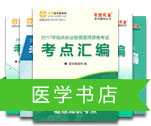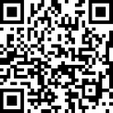随着对外外交流的增多,我们大家面对如何书写好英文放射报告的问题,英文报告和中文报稿有许多相同的地方,其实英文报告中的问题也常常是我们中文报告的通病。1988年发表在RADIOLOGY上的一篇文章(1988 Dec;169(3):825-6.Radiology reporting: attitudes of referring physicians ) 列出了一所国外大学医院临床医生对放射科报告的满意程度,我们可以看出下列这些意见和我们一些医院内的问题是一致的。
49% said the reports usually were clear,
40% thought the reports were occasionally confusing.
49% thought the reports sometimes did not sufficiently address the clinical questions.
32% preferred the summary statement to be at the beginning of the report,
29% preferred this portion at the end.
16% thought that it took too much time to receive the reports.
那么什么样的报告是合适的呢?它大体上应该满足三个方面:
1实效性:be tailored to satisfy the need for timeliness,
2 互动性:support the role of a diagnostic imager as a physician consultant by encouraging physician to physician communication
3准确性:minimize the risk of communication errors.
一般考量:
简洁:Efficient conveying of information does not require complete sentences in a narrative style. “no evidence of malignancy.”
冠脉旁路移植(CABG) 充血性心力衰竭(CHF)Creutzfeldt-Jakob disease (CJD) CT, or MR XRT =腹部放疗. smallbowel obstruction (SBO) 。 Single-sentence paragraphs in the “Impression” of the report are particularly vexing .
现在一般时:The present tense is always preferable and is appropriate despite the fact that every examination or procedure is performed before the dictation
语态:Comparisons can be dictated “there is” rather than “there has been” no change. Avoid the passive voice “is seen.”
格式
Header
Demographics
a. The facility or location where the study was performed.
b. Name of patient and another identifier.
c. Name of referring physician or other healthcare provider. If the patient is self referred, that should be stated.
d. Name or type of examination.
e. Date of the examination.
f. Time of the examination, if relevant (e.g., for patients who are likely to have more than one of a given examination per day).
g. Inclusion of the following additional items is encouraged:
i. Date of dictation
ii. Date and time of transcription
iii. Birth date or age
iv. Gender
History (Indications or Symptoms)
Keep it short. Remember, restating the same information is noncontributory to the ordering physician. Do not repeat the age and sex of the patient when this information is already included in the header. If pertinent history is not provided, this omission should often be explicitly stated in the report. This recommendation reflects current medicolegal advice, sends a subtle message to the ordering physician, and may appropriately convey diagnostic uncertainty
Body of the Report
一篇AJR Am J Roentgenol. 1995 Oct;165(4):803-6研究表明具体格式因情况不同而异。
“preferences of referring physicians for the extent of description of imaging findings included in radiology reports depend on the clinical circumstances. In the specific clinical scenarios examined, physicians preferred that the report include a brief description of the findings, except for screening chest radiographs, for which "normal examination" was an acceptable report. The referring physicians' preferences regarding the amount of descriptive detail included in the report were independent of their specialty, academic status, and experience ”
主要组成:
description of technique
quality
limitations of the examination
description of radiologic findings
diagnostic impression
differential diagnosis
recommendations for further investigations
普遍的格式:
Discussion:
Impression
This is logical and follows the inductive method. The facts are weighed and a conclusion made. In the modern hospital environment it has disadvantages. Those listening to the report have to wait until the end to hear the conclusion. The same problem is inherent in reading reports online, the referring clinician may have to scroll, or worse, page to the conclusion.
次选的格式:
Diagnosis or Findings
Discussion.
This reverse logic brings the most important information to the top where it is seen or heard first. This is the format preferred by the referring clinician.
Description of technique
The report should include a description of the studies and/or procedures performed and any contrast media (including concentration, volume, and route of administration when applicable), medications, catheters, or devices used, if not recorded elsewhere. Any known significant patient reaction or
complication should be recorded. Detailed technical descriptions are less necessary as examinations become more commonplace.
Findings and Discussions
注意事项:
简洁. Clinicians have been asked what they want: "brief description of the radiographic findings." Lawyers will argue that reports should be wordy as a defense against malpractice. Short reports equate to haste and carelessness. However, long reports cost money to produce and read. Be succinct. Eliminate unneeded or redundant words. "There is an area of linear atelectasis in the right lower lobe" should be - "Linear atelectasis right lower lobe." Only pertinent negatives are appropriate. Redundancy may be necessary for billing purposes such as separate paragraphs for CT of the abdomen and pelvis, or for with and without contrast media.
Redundancy is common. Example: lung fields. Redundant (and silly concept). "The lung fields are normal" becomes "normal lungs".
最重要的发现FIRST: Normal except for cancer RLL is unacceptable. The physician may stop at normal.
定量:Measure if possible or use qualifiers- mild, moderate, severe.
对比:Lack of comparison is a common factor in the loss of a malpractice lawsuit.
要求进一步检查:Call Results for unexpected, life-threatening problems. Document the call in the report.
斟酌用词,避免医生造成不利:- A common phrase "fracture is poorly aligned" should be avoided. Describe the facts. Unfortunately it is not uncommon to find a new malignancy on a mammogram or chest radiograph which in retrospect was present and reported out by a colleague as "normal" Words or phrases to avoid: missed, error, mistake, overlooked, not appreciated, obviously present, should have been identified
避免含糊其词: Avoid "if clinically indicated." Don't hedge. Put yourself in the referring physician's shoes. What would you conclude if you read this report?
不要混淆“Descriptions” 和“Impressions” :This observational section of the report is for vascular congestion and consolidations, whereas the “Impression” is for congestive heart failure (CHF) and pneumonia.
时间日期:Numeric dating will be an increasing problem with teleradiology extending across national boundaries. July 8 may be 7/8 in the United States, but it is 8/7 throughout most of the world.
可省略的词: this exam is provided, is obtained, is taken, or is submitted for interpretation; appearances are; a finding is seen, visualized, or identified; as stated above, as described above, or as noted above; please note, as noted, of note, or note is made of; is remarkable for; unremarkable; if clinically indicated; as well as; at this time; however; in addition to; in nature; otherwise normal; quite; unique; some and somewhat.
避免重迭用词:such as oval in shape, close proximity, small in size, slightly anechoic, direct comparison, interval change, time period, interval comparison, previous history, previous exam of (date), and completely asymptomatic. “Total or partial occlusion” and “normally or abnormally dilated” are part of our everyday lexicon but are no less inappropriate. Avoid double negatives like “not uncommon” and “not rare”.
“护身符” 应用:A “hedge” is an evasive statement to avoid the risk of commitment, and it has perhaps justifiably been called the tree of our specialty. A rule of thumb is not to use more than one hedge per sentence. Avoid “no overt evidence of CHF” and “no obvious pneumonia. necessary as examinations become more common hedge vocabulary includes density or opacity, apparent, appears, possible, borderline, doubtful, suspected, determinate, identified, seen, no definite, no gross, no obvious, no overt, no evidence of, no significant, possible, probable, suggested, suspected, suspicious for, vague, clinical correlation needed, and equivocal.
一些不当用词:
Significant The word “significant” in scientific writing is usually used only in the context of statistical significance. In radiology reporting “no significant abnormality or change” is acceptable but overused.
Aphthous ulcer: An aphtha is already an ulcer, “a small ulcer on a mucous membrane” .
Atypical, asymmetric, adynamic: The meaning of these words will be reversed if they are transcribed “a typical.” Nontypical is preferable.
Bony or boney: The noun “bone” has evolved into an adjective. Osseous is preferable.
Cardiac silhouette: This term, rather than simply “heart,” is appropriate only in the 1% of chest radiographs in which a pericardial effusion is suspected.
Cardiothymic silhouette: This pediatric term is inappropriate in adults.
COPD: Chronic obstructive pulmonary disease is a clinical spectrum of diagnoses that includes chronic bronchitis. Radiographs
reveal emphysema, a far more specific and important entity.
Dye: Contrast agents have no color. The only rationale for the misuse of this term is that dye has only three letters and is a single syllable.
Echolucent and sonolucent: These terms are throwbacks to “radiolucent,” whatever that is. “Anechoic” or “hypoechoic” are more acceptable.
Epicenter: This term, meaning over the center, is applicable to earthquakes.
Flat plate of abdomen: Most of us would not recognize an antique glass photographic plate. This term is on a par with KUB (kidneys–ureters–bladder).
Good, satisfactory, acceptable: These judgments are in the eye of the beholder.
Hip fracture: Joints dislocate and bones fracture.
Infiltrate: This is an acceptable pathology term, but its use will unduly disturb most of your pulmonary imaging colleagues.
Inhomogeneous: Do you mean heterogeneous?
IVP: Pyelo means pelvis. The acronym IVP originated because early contrast agents often opacified only the renal pelvis. The acronyms
EU or IVU (excretory or intravenous urogram) are preferable. If you perform many of these obsolete examinations, you and your referring clinicians might benefit from additional continuing medical education.
KUB: This term originated with urologists. Radiologists need broader horizons when perusing abdominal radiographs.
Lung markings: This terminology is controversial, but the use of “lung fields” is inexcusable.
Mild: Mild (or severe) are functional or physiologic adjectives. “Slight” is the preferable scientific term for size or quantity. Slight cardiomegaly and slight congestion may reflect mild CHF.
Neer and Judet views: Radiologists were obtaining oblique images of the shoulder and pelvis long before Neer and Judet made their important contributions.
Obese: This is an acceptable scientific word but it has pejorative connotations, and patients read their reports. Preferable language might be large size or large body habitus.
Osteoporosis and osteopenia: The use of these qualitative terms to describe radiographs has been preempted by quantitative T scores greater than 2.5 and 1.0, respectively. I now use the term “demineralization”.
Permits and permission: Physicians should not request permission to perform an examination. The patient does the requesting and should sign an informed consent rather than a permit. Take note when physicians and lawyers agree.
Plain and conventional radiograph: I agree with Rogers that “radiograph” without the modifiers is preferable.
Poor inspiration or inspiratory effort: A poor effort is subjective, possibly disparaging, and often incorrect. High diaphragms usually reflect body habitus or decreased lung compliance.
Portable radiograph: Portable means capable of being carried. Radiographs are portable, but X-ray machines are not. The term “bedside” is also imperfect but preferable.
Pulmonary edema: This term is etiologically less specific than CHF. It may also confuse clinicians who associate it with symptomatically severe CHF.
Reading examinations: Books are read and images interpreted. Likewise, images “show,” “reveal,” and possibly “detect” but only thinkers, like the radiologist, can “demonstrate.”
Shadow: Shadows are the lowest level of interpretation. I associate them with electromagnetic waves in the visible spectrum.
Shoulder separation: Acromioclavicular joints separate and glenohumeral joints dislocate.
Status post: How does status post differ from post? Is one status post surgery for life, or is there a time limit?
X ray or roentgenogram: These terms for a radiograph are incorrect or archaic.
Impression (Conclusion)
不要使用“Diagnosis” :“Impression” or “Conclusion” is preferable to “Diagnosis” because a diagnosis is more specific and thereby encourages radiologists to hedge. Others disagree and alternative words include summary, opinion, interpretation, and reading. When there is a 98% chance that findings are normal, or cancer, or fracture, or smallbowel obstruction (SBO), omit the hedges. After all, it is only an impression. The statement that no fracture is seen or identified, implying that a fracture may have been missed, is appropriate for radiographs of ribs or externally rotated hips in osteoporotic women. It is inappropriate for radiographs of long bones in young individuals.
Impressions are an excellent gauge of the common sense and clinical judgment of the radiologist. Separating the important from the incidental often takes time and thought. Keep it short. If readers want details they can refer to the descriptive section of the report. Impression: “Pneumonia” is preferable to repeating that it is a “patchy posterior segment left upper lobe pneumonia.”
“Impressions” are superfluous when reports will never be read.
最重要的FIRST:Do not number diagnoses and place each on a separate line or paragraph. This practice lengthens reports and encourages listing of non-pertinent findings. Tailor the “Impression” by addressing the clinical problem. Urgent or important findings should be described first. This advice is particularly applicable to lengthy reports and impressions that are unlikely to be completely read.
Do not repeat observations in the “Impression.” This admonition is difficult when the diagnosis is uncertain. However, stating that there is an abnormality of uncertain cause or significance is preferable to iterating previous descriptions.
不重复检查手段:Do not repeat the name of the examination in the “Impression.” “Normal chest radiograph,” “normal CT of the abdomen” (if there is such a thing), and “no mammographic evidence of malignancy” are repetitious.
和临床医生沟通:The use of the first person adds a personal touch, particularly when there is equivocation: “I doubt this is of clinical significance” or “I would be happy to discuss this with you.” Radiologists make too many recommendations, particularly in patients about whom we have little clinical history. These recommendations are often not helpful, are sometimes inappropriate, and are occasionally simply wrong. When the recommendation is obvious, it may be resented: most clinicians are not interested in our suggestions when the tube is in a bronchus or there is a new lung mass. Conversely, insecure clinicians may feel medicolegal pressure to act on our suggestions for additional imaging.
The terms “clinical correlation needed” and “if clinically indicated” are overused. They sometimes reflect defensive posturing by the radiologist.
State in the report that findings were conveyed to the referring physician. Written documentation is also necessary if a preliminary report, perhaps by a resident, undergoes substantive change before finalization.










 扫一扫立即下载
扫一扫立即下载


